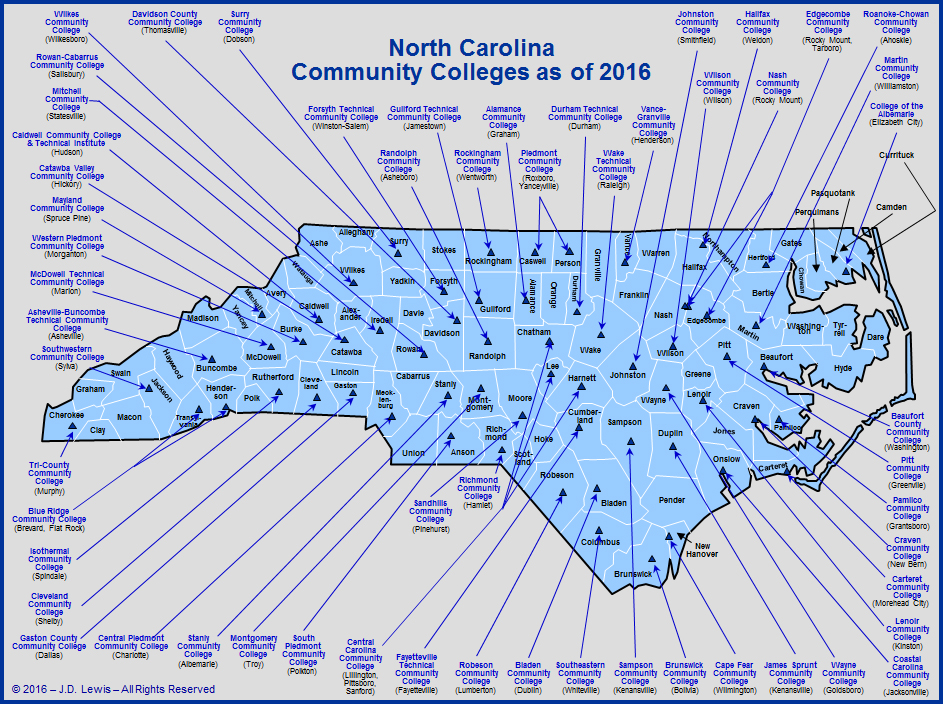 |
||||
|
|
||||

| The North Carolina State Board of Education initiated a new Department of Community Colleges in 1963, bringing the growing number of industrial education centers under one entity, but each one still controlled by its own board of trustees. All are under the guidance of the North Carolina Community College System and the North Carolina State Board of Community Colleges. This is a snapshot in time and a new page will be added roughly every four or five years. Stay tuned. | |||
|
|
Established |
|
Chair (March 2016) |
|
|
|
|
|
|
|
|
|
|
|
|
|
|
|
|
|
|
|
|
|
|
|
|
|
|
|
|
|
|
|
|
|
|
|
|
|
|
|
|
|
|
|
|
|
|
|
|
|
|
|
|
|
|
|
|
|
|
|
|
|
|
|
|
|
|
|
|
|
|
|
|
|
|
|
|
|
|
|
|
|
|
|
|
|
|
|
|
|
|
|
|
|
|
|
|
|
|
|
|
|
|
|
|
|
|
|
|
|
|
|
|
|
|
|
|
|
|
|
|
|
|
|
|
|
|
|
|
|
|
|
|
|
|
|
|
|
|
|
|
|
|
|
|
|
|
|
|
|
|
|
|
|
|
|
|
|
|
|
|
|
|
|
|
|
|
|
|
|
|
|
|
|
|
|
|
|
|
|
|
|
|
|
|
|
|
|
|
|
|
|
|
|
|
|
|
|
|
|
|
|
|
|
|
|
|
|
|
|
|
|
|
|
|
|
|
|
|
|
|
|
|
|
|
|
|
|
|
|
|
|
|
|
|
|
|
|
|
|
|
|
|
|
|
|
|
|
|
|
|
|
|
|
|
|
|
|
|
|
|
|
|
|
|
|
|
|
|
|
|
|
|
|
|
|
|
|
|
|
|
|
|
|
|
|
|
A study concerning the need for community colleges in North
Carolina was made in 1952 by Dr. Allan S. Hurlburt. It was not,
however, until 1957, during Governor Luther H. Hodges administration,
that a real beginning was made by the state legislature, through
the passage of a Community College Act, to initiate and develop
community colleges. The Act placed the general administration
of such community colleges under the North Carolina Board of
Higher Education (since reorganized as the University Board of
Governors). General Statute 115-D-l provides: Thus, the State of North Carolina, through legislative action
and through State Board of Education policy decisions, has assigned
to the institutions in the North Carolina Community College System,
whether community college or technical institute, a specific
role in the accomplishment of certain broad educational objectives
found to be necessary for the common welfare of the people of
the state. Along with the roles assigned to the public schools
and to the four-year colleges and universities, the community
college system makes possible the realization of the concept
of total educational opportunity. 1. To open thedoor of each institution to all persons of eligible
age, who show an interest in and who can profit from the instruction
offered, with no individual denied an educational opportunity
because of race, sex, or creed. The accomplishment of these goals requires understanding of and commitment to the role assigned to the community college system, including especially the significance of the open door admission policy with selective placement in programs, provisions made student retention and follow-up, comprehensive and balanced curriculum and extension offerings, and instruction adapted to individual student needs. It also requires that each institution develop fully the unique educational needs of its own service area; that it adapt its educational programs to such needs; and that it maintain effective correlation with the public schools, with four-year colleges and universities, and with employers in the area. Open door admission of both high school graduates and others who are 18.years old or older but not high school graduates is an essential requirement for filling the educational opportunity gap. The door is also open to the school dropouts between 16 and 18 years old, providing: that their needs can better be served in one of these institutions rather than in the public schools. Immediately above comes from the 1979 North Carolina Manual, pages 637-640, with minor edits. |
|||
 |
 |
© 2019 - J.D. Lewis - PO Box 1188 - Little River, SC 29566 - All Rights Reserved